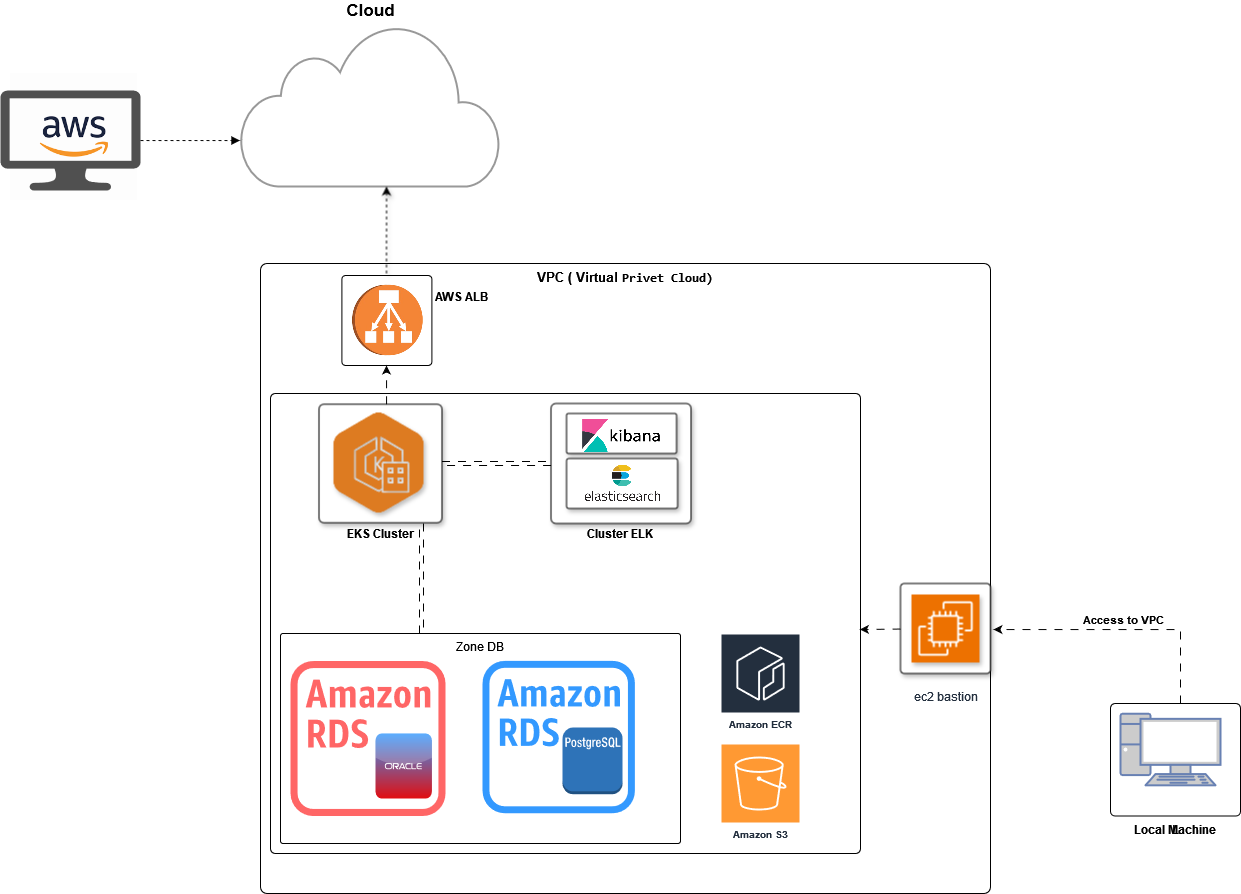Technologies Used
Project Gallery
Description
Overview: This project involved designing and deploying a secure, scalable, and highly available architecture using AWS services for managing containerized workloads, databases, and monitoring tools. The infrastructure was provisioned using AWS CloudFormation templates, and AWS Secrets Manager was utilized for secure management of sensitive data.
Key Responsibilities and Contributions:
-
Designed a cloud architecture incorporating AWS EKS, RDS, ALB, ELK Stack, and supporting services.
-
Automated the provisioning of infrastructure components using AWS CloudFormation.
-
Integrated AWS Secrets Manager for secure storage and retrieval of sensitive information.
-
Implemented centralized logging and monitoring using ELK Stack.
-
Ensured scalability and high availability of applications with ALB and EKS.
-
Configured Amazon RDS (Oracle and PostgreSQL) for database management.
-
Secured access to the VPC using an EC2 bastion host.
-
Deployed static assets and application backups to Amazon S3.
-
Utilized Amazon ECR for hosting Docker container images.
Architecture Components
Cloud
-
Provides a highly available and scalable environment for hosting cloud resources and applications.
VPC (Virtual Private Cloud)
-
A secure, isolated network hosting the core resources of the architecture.
Key Components:
-
AWS ALB (Application Load Balancer): Distributes incoming traffic to EKS.
-
EKS Cluster: Orchestrates containerized workloads.
-
Cluster ELK (Elasticsearch, Logstash, Kibana): Manages logging and monitoring.
-
Amazon RDS: Provides databases (Oracle and PostgreSQL) for application use.
-
Amazon S3: Stores static assets and application backups.
-
Amazon ECR: Hosts Docker images for application deployments.
-
EC2 Bastion Host: Provides secure access to the VPC.
-
AWS Secrets Manager: Ensures secure handling of sensitive information like database credentials.
Technology Stack:
-
Infrastructure Management: AWS CloudFormation
-
Container Orchestration: Amazon EKS
-
Database Management: Amazon RDS (Oracle and PostgreSQL)
-
Monitoring and Logging: ELK Stack
-
Secrets Management: AWS Secrets Manager
-
Storage: Amazon S3
-
Container Registry: Amazon ECR
-
Access Management: EC2 Bastion Host
Challenges Faced:
-
Scaling for High Traffic:
-
Implemented ALB and auto-scaling features in EKS to handle variable traffic loads effectively.
-
-
Secure Management of Sensitive Data:
-
Integrated AWS Secrets Manager to ensure credentials were securely stored and rotated automatically.
-
-
Monitoring and Troubleshooting:
-
Set up ELK Stack to centralize logs and enable real-time monitoring of system performance.
-
Results Achieved:
-
Improved scalability and fault tolerance for workloads hosted on EKS.
-
Enhanced security by isolating the network within a VPC and managing secrets securely.
-
Streamlined infrastructure deployment through CloudFormation templates, reducing setup time by 40%.
-
Enabled comprehensive monitoring with the ELK Stack, resulting in faster issue detection and resolution.
Takeaway:
This project showcases my ability to design and implement robust cloud architectures, automate infrastructure provisioning, and integrate advanced AWS services to achieve scalability, security, and high availability. It demonstrates my expertise in AWS CloudFormation, EKS, ELK Stack, RDS, and Secrets Manager.
